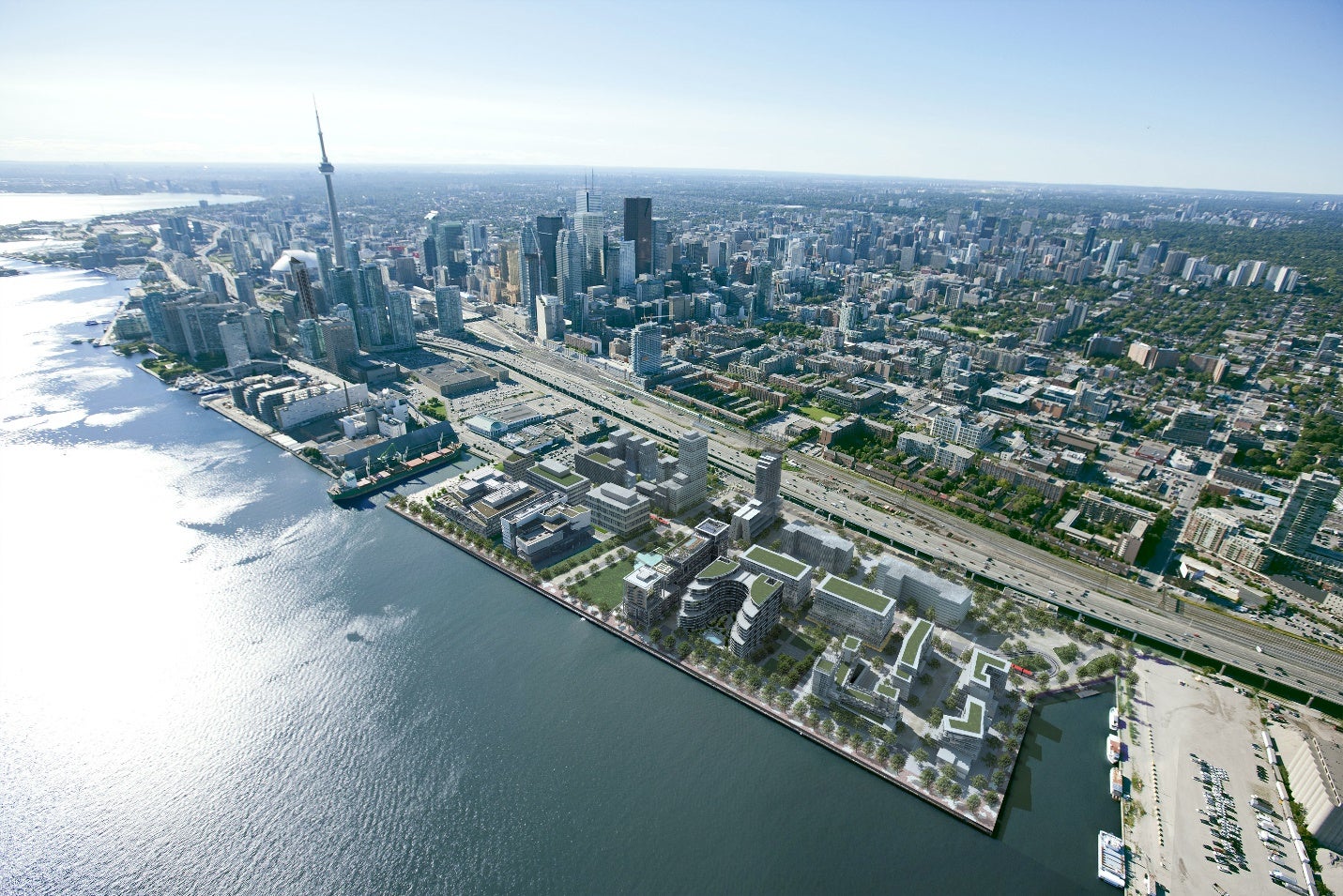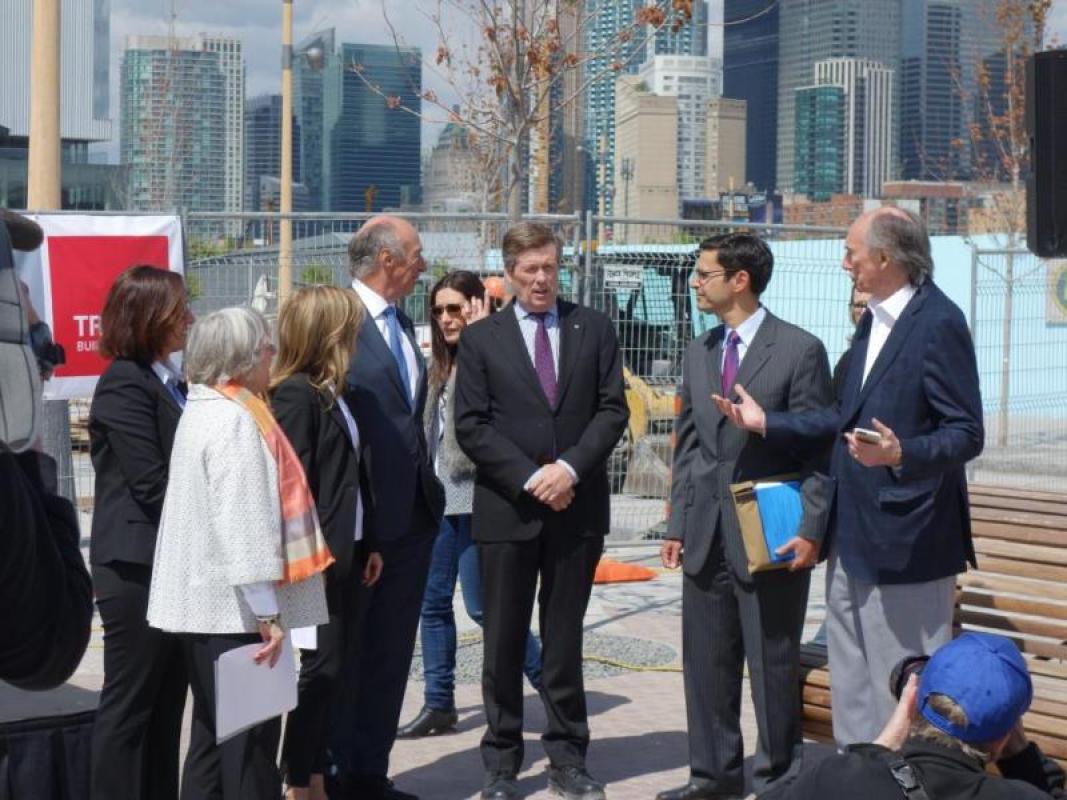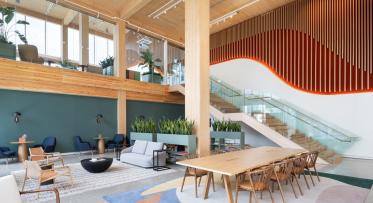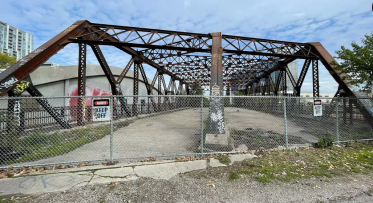A Major Milestone for East Bayfront: Aqualina at Bayside
Toronto Mayor John Tory stands on the Water’s Edge Promenade at the Bayside construction site along with Deputy Mayor Pam McConnell, Hines’ Avi Tesciuba and Tridel’s Leo DelZotto.
POSTED: JUNE 6, 2015
BY: MIRA SHENKER
Toronto Mayor John Tory came down to the Water’s Edge Promenade in Bayside last month to break ground on Hines-Tridel’s Aqualina, the first residential building in the development. Bayside will be a new, highly-sustainable waterfront community - the community we knew was coming when we built up the public realm and adjacent parks.
As expressed by our Vice President of Development, Meg Davis, at the event, “The Bayside development shows what revitalization can really mean; how something as simple as a group of buildings can make Toronto a better place to live.”
For decades, this four-hectare (10-acre) site between Lower Sherbourne and Parliament Streets was an underutilized, industrial area. When complete, Bayside will comprise over 190,000 square metres (2 million square feet) of new residential, employment, cultural and commercial space.
It’s the latest in a round of nearby developments, starting with Corus Quay in 2010 and followed by George Brown College, Sugar Beach and Sherbourne Common. Along with Bayside, ongoing development in the area includes Monde condominiums and the Daniels City of the Arts development.
Together these developments will form the heart of the East Bayfront neighbourhood, which Waterfront Toronto has been planning and preparing for more than 10 years. Waterfront Toronto’s precinct plan for East Bayfront was drafted in 2005. When journalists at the groundbreaking for Bayside’s Aqualina asked Mayor Tory why things seem to take so long to materialize on the waterfront, he said:
“The lesson I’ve learned from Waterfront Toronto – to the point where even my own attitude has changed – is that they [do] a lot of consultation with people in the city and [that] made things go more smoothly once they got to actually talking turkey about these developments ... That kind of work that’s done to take care and to make sure you take things into account like transit needs [is] going to get a better result.”

Its proximity to downtown Toronto and location directly on Lake Ontario will make East Bayfront one of Toronto’s most significant waterfront communities.
Precinct planning has allowed Waterfront Toronto to begin the work of developing a cohesive waterfront – something that was next to impossible throughout the twentieth century as the waterfront suffered through an era of disjointed, uncoordinated and stop-and-go development.
Upwards of 20 different public departments, agencies, boards, and special purpose bodies that span across three levels of government have had some sort of hold on the waterfront at any given time, including the City of Toronto, Toronto Port Authority (now PortsToronto), Metro Toronto, The Harbour Commission, Canada Lands Company and even the LCBO. Regular changes in ownership coupled with substantial private land holdings since the 1950s have been a major obstacle to developing the swaths of brownfield and underutilized space along our city’s prime waterfront land.
The Toronto Waterfront Revitalization Act 2002 helped to consolidate a number of lands held by the three levels of government into a single plan.
How does Waterfront Toronto drive development?
Tridel President Leo DelZotto says Tridel has never built on the waterfront until Bayside. “This sets a new standard for what Toronto should be," said DelZotto at the groundbreaking.
Waterfront Toronto sets that standard by establishing comprehensive Precinct Plans that guide development on the waterfront, playing the role of master developer. This ensures that future development occurs in an appropriate way, by creating guidelines for land use and urban design, identifying future parkland, public spaces, and infrastructure requirements. Waterfront Toronto then secures large-scale municipal development and rezoning approvals, establishing legal requirements for design and sustainability. Following these approvals, Waterfront Toronto then coordinates the infrastructure and municipal services, oversees environmental risk assessments, and other responsibilities necessary for the transformation of brownfield land and development of new communities.
Waterfront Toronto is currently building new infrastructure to support the Bayside Toronto development. That includes:
- The Water’s Edge Promenade
- Dockwall reinforcement
- Public streets
- Stormwater management and municipal services
The parks and public spaces that form the foundation of a complete community have been in place around Bayside for several years. Both Sherbourne Common and Sugar Beach opened in 2010.
Having established the prerequisites for development – including parks and public spaces – and greater certainty for the real estate development community, Waterfront Toronto then attracts private-sector development partners who are capable of implementing the commercial and residential development projects envisioned in the Precinct Plans, in accordance with Waterfront Toronto’s high standards for revitalization. The development partners typically purchase or lease land from Waterfront Toronto or our government partners, subject to legal development agreements with Waterfront Toronto and City Council approval. These agreements require them to take on the financing, market, and delivery risk associated with completion of their real estate development projects.
In the case of Bayside, those private sector partners are Hines and Tridel.

“Tridel has never built on the waterfront until this community. This sets a new standard for what Toronto should be." – Leo DelZotto, Tridel
Tim Jones, President and CEO of Artscape said at the groundbreaking, “What is terrific about the Bayside development is how walkable it is – the quality of the design and the attention that has been paid to the public realm.”
Jones is excited about the 20 per cent affordable housing we are mandating for this and all of its waterfront communities. The first affordable housing units in Bayside will be built into Hines-Tridel’s Aquavista, run by Artscape. “When artists move into a neighbourhood, they add energy and vibrancy, they populate cafes and they program public spaces," said Jones. "They are serial networkers and natural city builders. All of this leaves an imprint on places that over time embodies the defining characteristics of a neighbourhood.”
Taking the long view
In her remarks at the groundbreaking ceremony, Deputy Mayor Pam McConnell praised the world-class design of Bayside’s buildings, as well as our mandate to provide affordable, livable neighbourhoods where families can grow over time.
As Mayor Tory said, “I’m looking forward to the day when we have a huge new set of communities over here, but I think we should do it carefully because it’s our only waterfront and we’ve seen when we take the care and invest the money to do it with the standard of excellence that we get a better result.”




